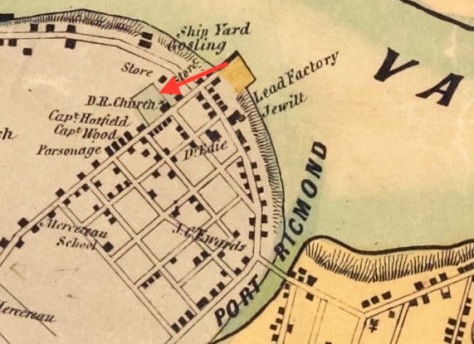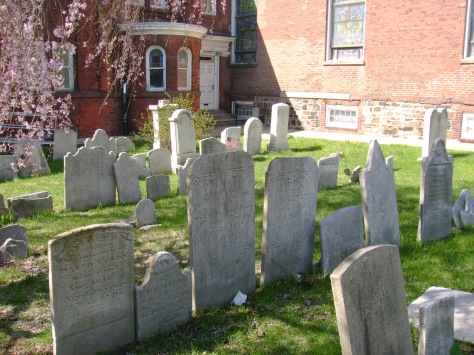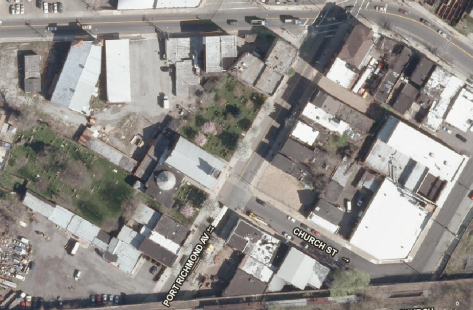
The Reformed Church at Port Richmond is home to the earliest congregation on Staten Island and its surrounding cemetery includes the Island’s oldest public burial ground. Situated just south of the busy intersection of Port Richmond Avenue and Richmond Terrace, this picturesque site—landmarked by the City of New York in 2010—features attractive lawns, historical buildings, artistically significant monuments, and graves of the North Shore’s early Dutch settler families.
In 1715, the Reformed Protestant Dutch Church congregation built their first house of worship at this site, next to the graveyard that had already been in use for at least a decade. Thought to have originated as a private burial ground for the Corson family in the 1690s, the graveyard is referred to in official documents as “the burying place” as early as 1705 and became the burial ground for most families on the North Shore during the 18th century. During the 19th century, the church acquired more land adjacent to the church to expand its burial grounds.

The present church at this site is the congregation’s third, built in 1844. This Greek Revival-style building was enlarged in 1898 with a Sunday school wing added on the south side of the church. The surrounding cemetery is divided into three sections to the north, south, and west of the building complex.

The cemetery section to the north of the church is the oldest and incorporates the original public burial ground of the North Shore’s Dutch settlers. This section is notable for including several finely carved brown and red sandstone gravemarkers that have been ascribed to the workshops of significant New Jersey stone carvers. Of the 224 gravestones here, the oldest with a legible inscription is that of Mary Van Pelt, who died in 1746 at age 15. Her red sandstone marker is topped with a winged death’s head in a style attributed to the “Common Jersey Carver,” an anonymous artisan whose work, dating from the 1720s to 1760s, is well represented in northern New Jersey communities. Other sandstone markers in this section of the cemetery are attributed to carver Ebenezer Price, the most prominent 18th-century stonecutter in the New York-New Jersey region.
The small cemetery section to the south of the church occupies land donated by Daniel Tompkins in 1816 and includes 105 gravestones dating between 1816 and 1896. Most of the monuments here are marble and mark the graves of members of families such as the Tysons, Merseraus, Jacques, Sinclairs, Haughwouts, Crocherons, Housmans, and Posts. The 1898 Sunday school annex was built over part of this south cemetery; some graves were moved at this time but several rows of graves were left in place and remain beneath the crawl space of the the wing.

The third cemetery section, not visible from the street, is located behind the Sunday school wing on land purchased in 1833 (and expanded in the 1870s) by the Reformed Church to provide for future burial needs. The 363 markers here, mostly of marble or granite, date between 1834 and 1916. Notable here is the grave of congressman and state senator Judge Jacob Tyson (1773-1848) and the family plots of the Van Name, Houseman, Drake, Kholer, and Post families.
Although the Port Richmond Reformed Church is still an active congregation, no interments have been made in their cemetery grounds for over a century. Historically, the church served as a hub for the Port Richmond community that grew and was built around it. The generations of Staten Islanders that are laid to rest in the church’s grounds are part of this legacy.


Sources: Butler’s 1853 Map of Staten Island; Fairchild Cemetery Manual (1910); “History of the Reformed Church on Staten Island,” Staten Island Historian 16(1) Jan-March 1955; Realms of History: The Cemeteries of Staten Island (Salmon 2006); Reformed Church on Staten Island, Sunday School Building, and Cemetery Designation Report, (Landmarks Preservation Commission 2010); Reformed Church on Staten Island
